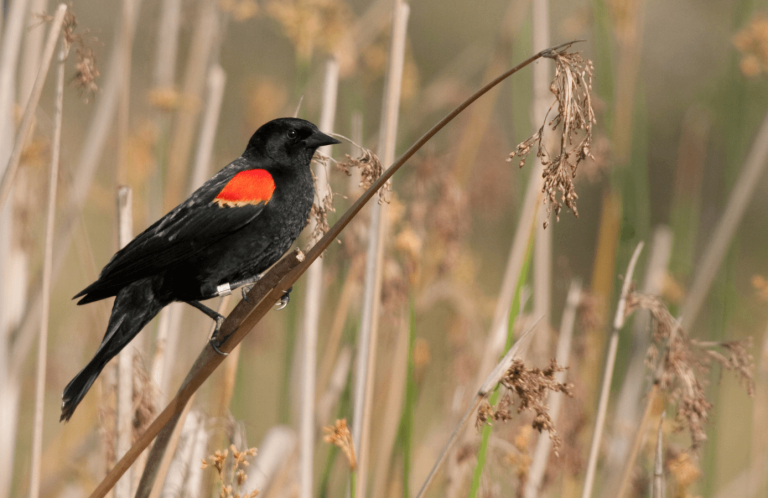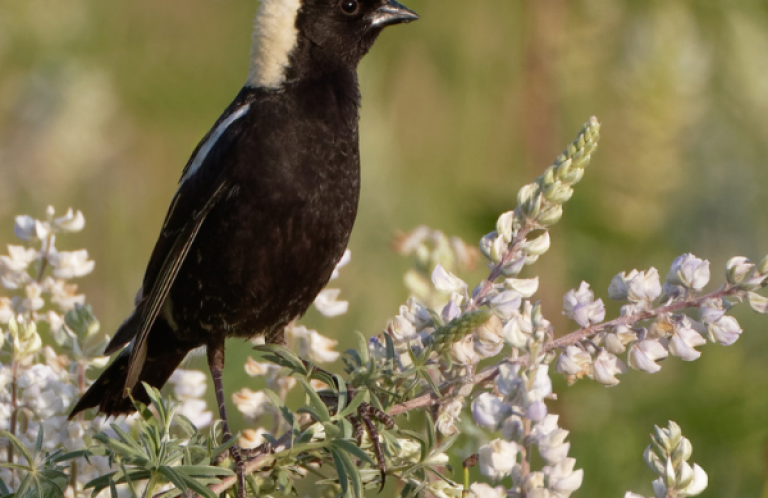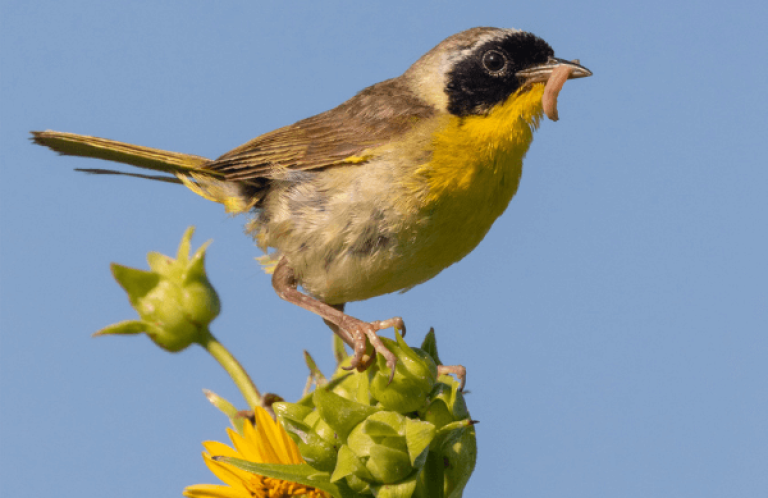New Study Provides More Evidence That “Neonic” Pesticides are Driving Pollinator Declines

Photo by Larry Master, masterimages.org.
Pesticides called “neonicotinoids” are bad news for bees, and for other invertebrates and grassland birds like the Western Meadowlark as well.
In a new study published in the Proceedings of the National Academy of Sciences, researchers analyzed thousands of surveys of a once-widespread pollinator called the Western Bumble Bee, a species that serves as an indicator of overall pollinator health. They found a 57-percent decline in the bee's occurrence across its historical range in the western U.S. over the past 20 years, driven by rising temperatures, changing land use, and pesticides. Of the pesticides included in the analysis, just one kind noticeably correlated with areas of bee decline: insecticides called neonicotinoids, often shortened to neonics.
Neonics are nicotine-like neurotoxins that suffuse an entire plant when applied, from its roots to its pollen grains. The neurotoxin works by attacking insects' nervous systems, with effects including uncontrollable shaking, paralysis, and death. The target for this impact is pest species such as thrips and weevils, but bees that stop by a treated plant to feed on nectar are impacted as well.
Estimated Western Bumble Bee presence was more than a third lower on average in areas where farms applied neonics compared to farms that didn't — an effect similar to several years of severe drought. Higher rates of neonic application corresponded to steeper declines.
“Western Bumble Bees are a decent indicator of overall pollinator health and have already had a huge range reduction,” said Hardy Kern, Director of ABC's Birds and Pesticides Campaign. “Their decline is terrible news for insectivorous birds; neonics leach into soil and water, indiscriminately killing important native invertebrates. If the bees are in decline, other non-target insects that birds depend on for food won't be far behind.”
The team also used the data to project possible future trends in Western Bumble Bee occupancy across their current range through 2050. The projections were particularly dire, with no possible future where the bees didn't continue to decline.
In a worst-case scenario, the combined stresses of climate change, habitat loss, and pesticides mean Western Bumble Bee occurrence could decline by as much as 97 percent across its entire range by 2050, bringing it dangerously close to extinction. However, in a modeled best-case scenario that includes neonics “ceas[ing] to exist” or “counteracted by shifts in management actions,” Western Bumble Bee populations could stabilize or even improve in some parts of their range.
“Banning neonics is perhaps the simplest and most impactful action we can take to help pollinators,” Kern said. “Healthy pollinator populations are essential to healthy habitats, and healthy, intact habitats are crucial to mitigating the impacts of threats like climate change on grassland bird species.”
This study joins a growing mountain of evidence that neonics cause significant harm to a variety of wildlife in North American grasslands. Studies have shown that the neurotoxin impacts bumble bee behavior, resulting in bees that move slower and eat less, and queens that spend less time caring for their brood. And insects aren't the only animals impacted.
A 2013 report by ABC found that just one seed treated with neonics is enough to kill a songbird, and a more recent study found that neonics could impair seed-eating songbirds' ability to migrate. The birds most likely to be impacted are grassland species, which have suffered the steepest declines of any North American bird group in the past 50 years.
Neonics are mostly banned in Europe due to this demonstrated environmental harm, but in the U.S., they remain the most widely used pesticides, applied to almost all corn and crops like cotton, sugar beet, and soybeans. Neonics applied as seed coatings also evade much of the scrutiny other pesticides are subjected to, due to a regulatory loophole.
This new study, while it focuses on declines in just one native bee species, provides real-world evidence of the ecosystem damage neonics can cause, especially when combined with other human-induced environmental stressors.
"It is long past time to follow the lead of the European Union and ban neonics, ensuring the enduring health of Western Bumble Bees and the plants, birds, and ecosystems they support," Kern said.
###
American Bird Conservancy is a nonprofit organization dedicated to conserving wild birds and their habitats throughout the Americas. With an emphasis on achieving results and working in partnership, we take on the greatest problems facing birds today, innovating and building on rapid advancements in science to halt extinctions, protect habitats, eliminate threats, and build capacity for bird conservation. Find us on abcbirds.org, Facebook, Instagram, and Twitter (@ABCbirds).
Media Contact
Jordan Rutter
Director of Communications
media@abcbirds.org


















































